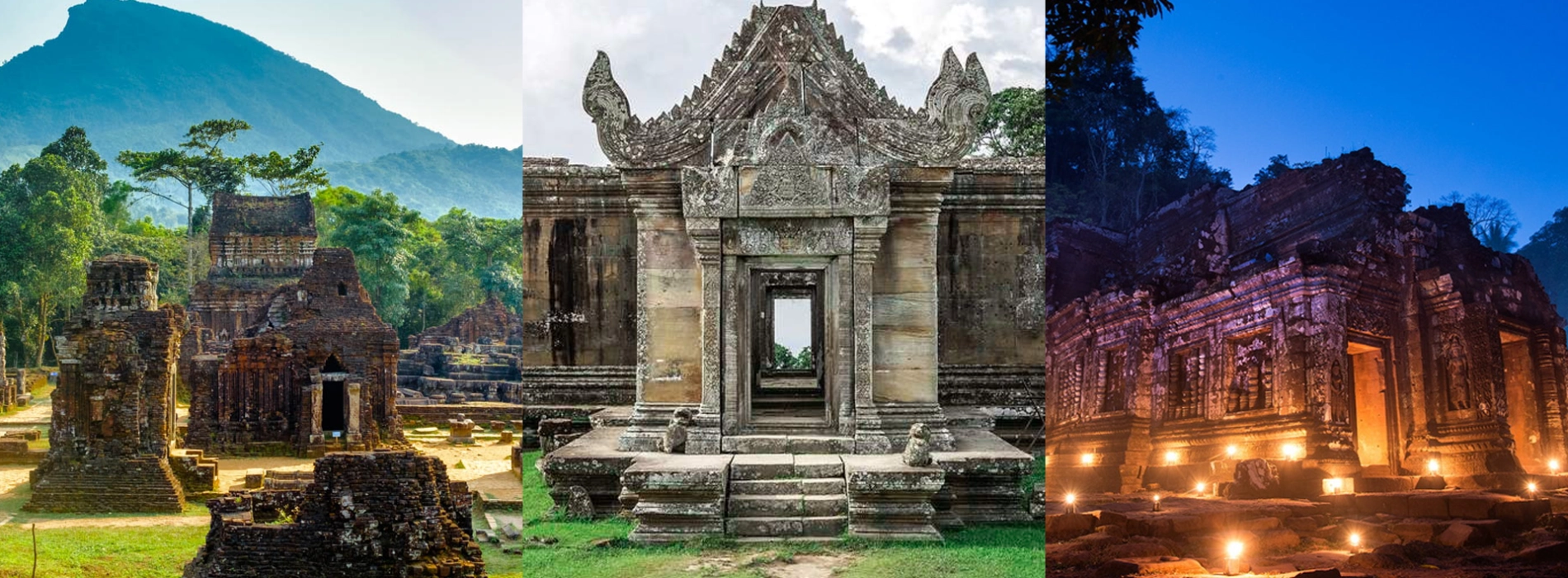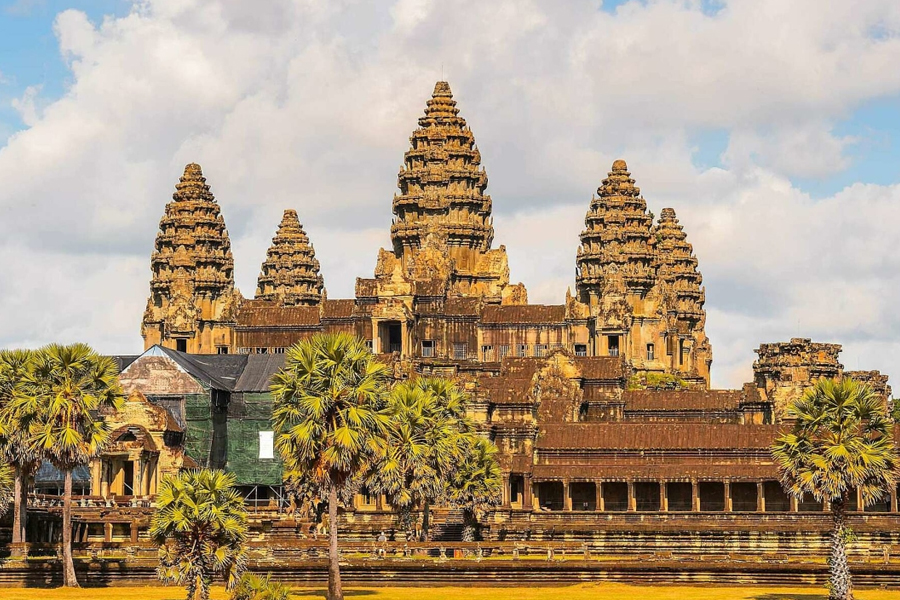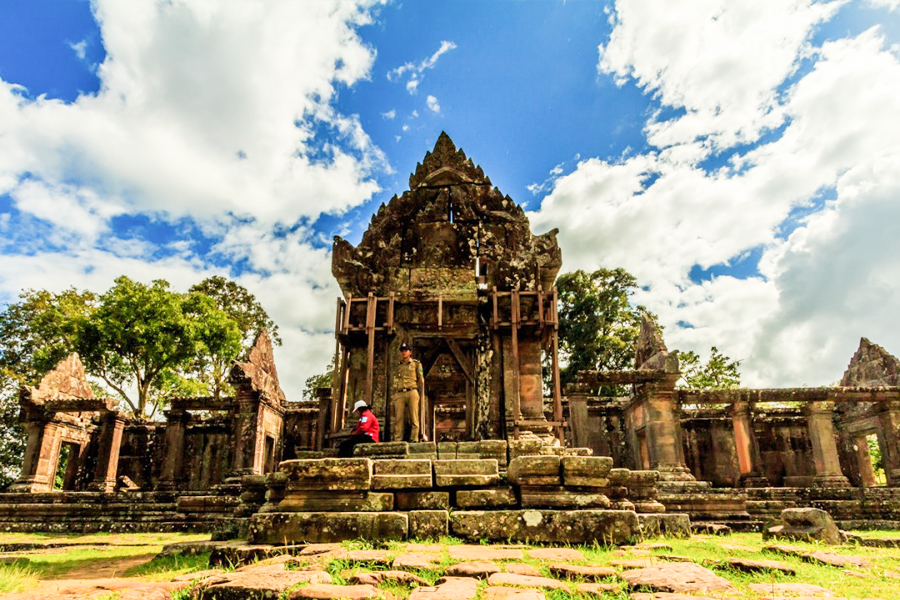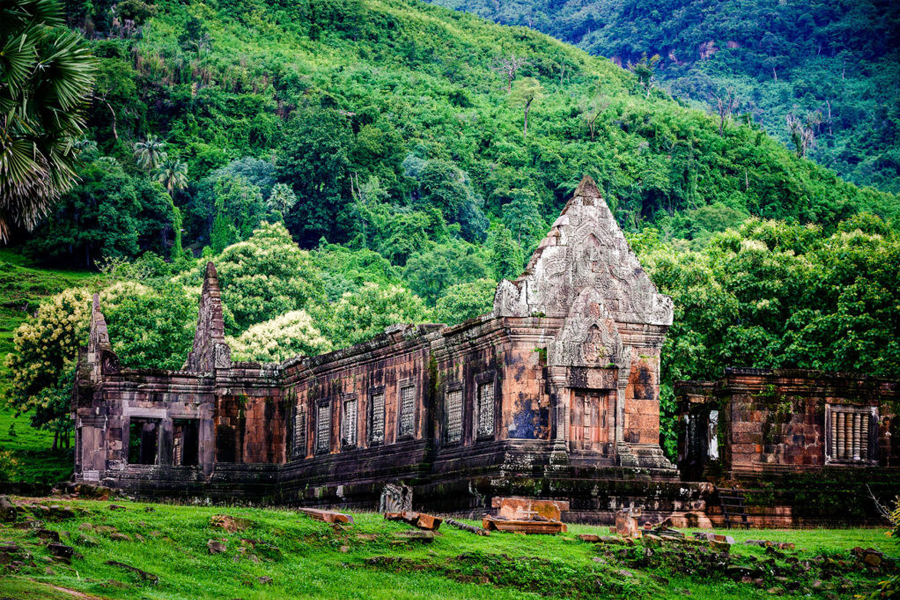
Take a step back in time with Asia King Travel as we delve into the captivating history of Southeast Asia with an adventure through Vietnam, Laos, and Cambodia, checking out 6 ancient historical sites, where ancient tales and cultural wonders await exploration. Let's uncover the secrets of the past and immerse ourselves in the rich heritage of this region together!
One of the most ancient and well-known historical sites in Vietnam is the Imperial Citadel of Thang Long, also known as Hoang Thanh Thang Long, located in the capital city of Hanoi. Since the move of the capital from Hoa Lu, Ninh Binh, this ancient citadel has served as the political and cultural center of the Dai Viet Kingdom for over a millennium. Throughout history, it has gone through many periods of destruction and then renovation, and has withstood the damage of time, standing tall till this day.
.jpg)
Imperial Citadel of Thang Long, one of Vietnam's most famous historical site
Its grand architectural features, from imposing gates to elaborate palaces, offer a captivating glimpse into Vietnam's imperial past. Visiting the Imperial Citadel of Thang Long, you can behold the ancient constructions there that are not only reminiscence of the former monarchy, like Kinh Thien Palace and Hau Lau, but also heritages left by the Vietnamese army from the independence war against the French, like the D67 House, once served as the headquarters of the Vietnamese army.
With its steadfast resilience and profound cultural importance, the Citadel of Thang Long is a reminiscence of Vietnam's ancient history, showcasing the enduring legacy of its past. This is a must-visit destination if you plan to visit Hanoi.
Read more: Imperial Citadel of Thang Long
An obscure site that not many people know about, My Son Sanctuary, located amidst the verdant landscapes of Quang Nam, central Vietnam, is an ancient marvel steeped in history and culture. Vietnam’s ancient architecture was influenced by the Chinese, so it goes the same for most historical sites in the country, except for My Son Sanctuary. Visiting My Son, you may find it similar to the temples in Angkor, Cambodia. It is because the temples in My Son were constructed by the Champa civilization, which existed in central Vietnam centuries ago. Their architecture was heavily influenced by the Indians, similar to other countries in the region like Laos, Cambodia, and Thailand.
My Son was founded in the fourth century and became a prominent Hindu temple complex devoted to worshiping Hindu gods, especially Shiva. The sanctuary developed into the center of the Champa Kingdom a thriving hub for religious and cultural events during the ensuing decades, especially from the 7th to the 10th century, when the kingdom was at its height. The sanctuary boasts a collection of red brick temples and structures adorned with intricate carvings and sculptures, showcasing the Cham people's mastery of craftsmanship, combining Indian Hindu traditions with indigenous Cham traits.
 My Son Sanctuary, an underrated historical site in Vietnam
My Son Sanctuary, an underrated historical site in Vietnam
Since the decline of Champa and its gradual dissolution, My Son became an abandoned site until French scholars and archaeologists discovered it in the 19th century. Preservation efforts of the site proved to be difficult due to the damage from the war, leaving them in a state of ruin. Despite the difficulties, it has prevailed to this day and regained its cultural significance, earning UNESCO World Heritage status in 1999. If you want to experience a unique historical site in Vietnam found in nowhere else in the country, you should visit My Son to recognize the spiritual and architectural legacies of the Champa Kingdom.
Read more: My Son Sanctuary
 Angkor Wat, the most renowned historical site in Cambodia
Angkor Wat, the most renowned historical site in Cambodia
Needing no further introduction, Angkor Wat is the most famous historical site in all of Cambodia, and one of the most well-known in Southeast Asia. It is regarded as both Cambodia's most popular tourist destination and a national symbol of the nation. Angkor Wat, part of the greater Angkor Complex, the former capital city of the Khmer Empire, is regarded as the world's largest religious building. It was built in the 12th century by Khmer King Suryavarman I to originally dedicated to the Hindu god Vishnu, but it was later transformed into a Buddhist temple. With the temple's gorgeous bas-reliefs and towering towers, visitors can experience the genius building of ancient Khmer art and civilization.
Read more: 10+ Interesting Facts about Angkor Wat Temple Cambodia
Preah Vihear Temple is a UNESCO World Heritage Site that represents the great length of Cambodian history, and is perhaps best known for the conflict between the two nations over sovereignty. Having undergone numerous modifications over the course of history, it contains elements of many architectural styles.
 Preah Vihear Temple, another fascinating historical site in Cambodia
Preah Vihear Temple, another fascinating historical site in Cambodia
It predates even the notorious Angkor Wat, having been constructed in the ninth century as a place of worship for the Hindu deity Shiva. The temple's design follows a North-South axis that extends from the mountain's base to its pinnacle. The temple's rooftop features a picture of the tail of a naga snake, snaking symmetrically up to the sky, demonstrating the meticulousness and skill with which the constructions were erected. The main hall space is now a Buddhist place of worship after periods of renovations.
Read more: Preah Vihear Temple
Located in Vientiane, the capital of Laos, Pha That Luang is a magnificent representation of the nation's rich religious and cultural legacy, serving as the most important national monument in Laos as well as a national symbol of the country. Pha That Luang was first built as a Hindu temple in the third century and has since undergone numerous modifications over the centuries. It was converted to a Buddhist temple in the mid-16th century by King Setthathirat, who also expanded and renovated the stupa massively.
 Pha That Luang, the historical site serving as the national symbol of Laos
Pha That Luang, the historical site serving as the national symbol of Laos
With its magnificent golden facade, this famous Buddhist stupa is a source of national pride and a center for both historical significance and spiritual devotion. The golden stupa's imposing presence symbolizes the wealth of Buddhism and its fundamental influence on the formation of Laos's national identity. That Luang Festival, an annual event, is held there every year, showcasing the Laotian people's enduring devotion to Pha That Luang, bringing pilgrims, residents, and visitors together. This is a must-visit destination in Laos as visitors are enthralled not only by its magnificent architecture but also by the place's spiritual atmosphere.
Read more: Pha That Luang
 Wat Phou, a historical site that is held in high regard by Lao people
Wat Phou, a historical site that is held in high regard by Lao people
Inside the serene town of Champasak, Laos, lies Wat Phou, an ancient temple that exudes an aura of mystique and historical significance. Wat Phou, which translates to "mountain temple," was first built as a tribute to the Hindu god Shiva. Wat Phou and the lesser-known Khmer temples in Southern Laos were constructed as early as the tenth century BC, with architectural styles reminiscent of Angkor, Cambodia. It was later converted into a Buddhist sanctuary, which it remains to this day. Lao people regard this temple as having immense spiritual significance, especially during the annual Boun Wat Phou Festival. The sounds of traditional music fill the air, the smell of incense fills the streets, and people from all walks of life congregate to celebrate amid the ancient ruins, luring festival-goers into a world of cultural immersion.
You may like: Boun Wat Phou - Largest Buddhist Festival in Laos
In conclusion, these historical sites offer a captivating glimpse into the ancient beauty and rich heritage of Vietnam, Laos, and Cambodia. Each site recalls a unique story of rich heritage and cultural significance, inviting visitors to delve into the timeless charm of Southeast Asia's captivating past. If you have a passion for history and culture, these historical attractions are tailor-made for you. Contact Asia King Travel now and let us organize a tour for you to witness these amazing sites.
You may also like: